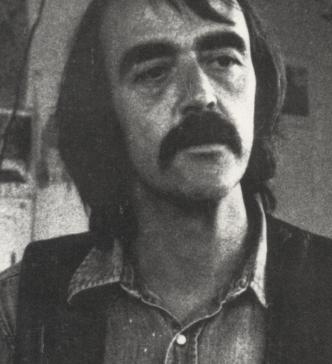WilliamWILEY
About
A precocious talent in his youth, William T. Wiley has initially helped to establish California’s funk art but, over time, his work has shown a lyricism and stylistic elegance that outshines funk art’s provocative bravura.
Deeply committed in each work to the overall meaning, often laced with humour and hidden in smart puns or turns of phrase, mixed with references to current culture, Wiley has garnered international admiration, and deservedly so, with his work in watercolor, where he combines fine, black, detailed drawing and luminous hues.
William T. Wiley was born in Bedford, Indiana, in 1937. In 1960 he was included in the group show Young America at the Whitney Museum of American Art in New York and had his first solo shows at the Staempfli Gallery in New York, and the Hansen Fuller Gallery in San Francisco.
An eclectic and versatile artist, he has made sculptures, paintings, prints and assemblages of surreal-dadaist origin; worked in performance art with, among others, the composer Steve Reich (Over Evident Falls, 1968); made films (including Man’s Nature, 1970); and taught at various American schools, including the University of California at Davis and the School of Visual Arts in New York.
Wiley’s work has been exhibited widely across the United States, as well as in Paris, Seoul, Koln, Düsseldorf, Melbourne, Frankfurt, Vienna, and London. In 2009, the Smithsonian American Art Museum presented a major exhibition of the artist’s career titled What's It All Mean: William T. Wiley in Retrospect. Among the most important group shows in which he has participated, we have to mention: When Attitudes Become Form at the Kunsthalle, Bern, 1969, curated by Harald Szeemann, (being reprised in 2013 by Germano Celant at Fondazione Prada during Venice Biennial); Extraordinary Realities (1973) and Minimalism to Expressionism (1983), both at the Whitney Museum of American Art in New York; and Surrealität-Bildrealität 1924-1974 at Städtische Kunsthalle in Düsseldorf in 1974.
In 1972 he took part in Documenta V in Kassel and in 1972 and 1980 in the Venice Biennial.
In 2013 he presented his works from the late Sixties and recent paintings from 2000 at Fondazione Marconi.
William T. Wiley died on April 25 2021.
Deeply committed in each work to the overall meaning, often laced with humour and hidden in smart puns or turns of phrase, mixed with references to current culture, Wiley has garnered international admiration, and deservedly so, with his work in watercolor, where he combines fine, black, detailed drawing and luminous hues.
William T. Wiley was born in Bedford, Indiana, in 1937. In 1960 he was included in the group show Young America at the Whitney Museum of American Art in New York and had his first solo shows at the Staempfli Gallery in New York, and the Hansen Fuller Gallery in San Francisco.
An eclectic and versatile artist, he has made sculptures, paintings, prints and assemblages of surreal-dadaist origin; worked in performance art with, among others, the composer Steve Reich (Over Evident Falls, 1968); made films (including Man’s Nature, 1970); and taught at various American schools, including the University of California at Davis and the School of Visual Arts in New York.
Wiley’s work has been exhibited widely across the United States, as well as in Paris, Seoul, Koln, Düsseldorf, Melbourne, Frankfurt, Vienna, and London. In 2009, the Smithsonian American Art Museum presented a major exhibition of the artist’s career titled What's It All Mean: William T. Wiley in Retrospect. Among the most important group shows in which he has participated, we have to mention: When Attitudes Become Form at the Kunsthalle, Bern, 1969, curated by Harald Szeemann, (being reprised in 2013 by Germano Celant at Fondazione Prada during Venice Biennial); Extraordinary Realities (1973) and Minimalism to Expressionism (1983), both at the Whitney Museum of American Art in New York; and Surrealität-Bildrealität 1924-1974 at Städtische Kunsthalle in Düsseldorf in 1974.
In 1972 he took part in Documenta V in Kassel and in 1972 and 1980 in the Venice Biennial.
In 2013 he presented his works from the late Sixties and recent paintings from 2000 at Fondazione Marconi.
William T. Wiley died on April 25 2021.





